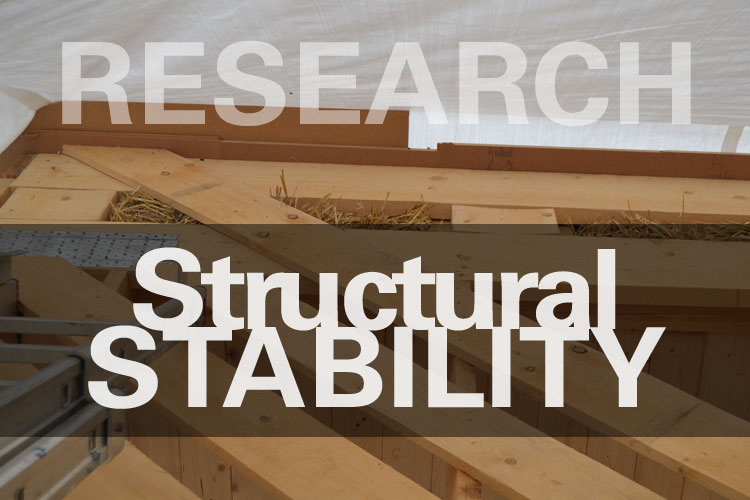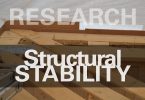EN: Since the validation in July 2011 of the Professional Rules (elaborated by the French Network of Straw Construction, RFCP “les Compaillons”), the use of straw material is officially recognized in French construction as an INSULATING material and as a FILLER. These rules will be applicable from January 2012 in individual and collective buildings, including those open to the public. This progress will allow the diffusion of a new bio-sourced insulator and give the opportunity to the designers and craftsmen to appropriate the material as well as its technologies of implementation. However, the recognition of the straw bale does not stop there, since it is possible to ask more of it, particularly with regard to its mechanical properties, which are currently excluded from the Pro rules. In fact, many constructions in the world have been built with “load-bearing straw” and have largely demonstrated their efficiency over time since the first constructions of this type date back to the 19th century. They are still in good condition today. The principle of this construction method consists of “stacking” the straw bales, pre-compressing them, then coating the interior and exterior walls with earth, lime (…) or fibre-based coatings. The straw/plaster complex behaves like a sandwich-type composite structure capable of withstanding vertical and horizontal forces. This article will report on the research work carried out since 2008 by ENTPE and ENPC, in close collaboration with RFCP, Architecture BOHA and Gabion, to understand and model the behaviour of the multi-layer (or sandwich) plaster-straw-render structure. It will present results obtained on the characterisation of coatings adapted to straw bale structures, on the experimental behaviour and numerical modelling of straw block walls associated with different coatings.
FR: Depuis la validation en juillet 2011 des Règles Professionnelles (élaborées par le Réseau Français de la Construction Paille, RFCP “les Compaillons”), l’usage du matériau Paille est reconnu officiellement dans la construction française en tant qu’ISOLANT et SUPPORT d’ENDUITS. Ces règles seront applicables dès Janvier 2012 dans les bâtiments individuels ou collectifs y compris recevant du public. Cette avancée va permettre la diffusion d’un nouvel isolant bio-sourcé et donner l’occasion aux concepteurs et artisans de s’approprier le matériau ainsi que ses technologies de mise en œuvre. La reconnaissance de la Botte de Paille ne s’arrête pour autant pas là puisqu’il est possible de lui demander plus, notamment en ce qui concerne ses propriétés mécaniques actuellement exclues des règles Pro. En effet, dans le monde de nombreuses constructions ont été réalisées en “Paille Porteuse” et ont largement démontré leur efficacité dans le temps puisque les premières constructions de ce type datent du XIXème siècle. Elles sont aujourd’hui encore en bon état. Le principe de ce mode constructif consiste à “empiler” les bottes de paille, à les pré-comprimer, puis à enduire les parois intérieures et extérieures avec des enduits à base de terre, chaux (…) éventuellement fibrés. Le complexe Paille / Enduit se comporte comme une structure composite de type sandwich capable de reprendre les efforts verticaux et horizontaux. Cet article fera état des travaux de recherche réalisés depuis 2008 par l’ENTPE et l’ENPC, en collaboration étroite avec le RFCP, Architecture BOHA et le Gabion, pour comprendre et modéliser le comportement de la structure multicouche (ou sandwich) enduit-paille-enduit. Il présentera des résultats obtenus sur la caractérisation d’enduits adaptés aux structures en bottes de paille, sur le comportement expérimental et la modélisation numérique de murs en blocs de paille associés à différents enduits.
Authors:
- Forêt, Gilles
- Hamelin, Cédric
- Olivier, Myriam
Link: https://hal-enpc.archives-ouvertes.fr/hal-00940081/document



